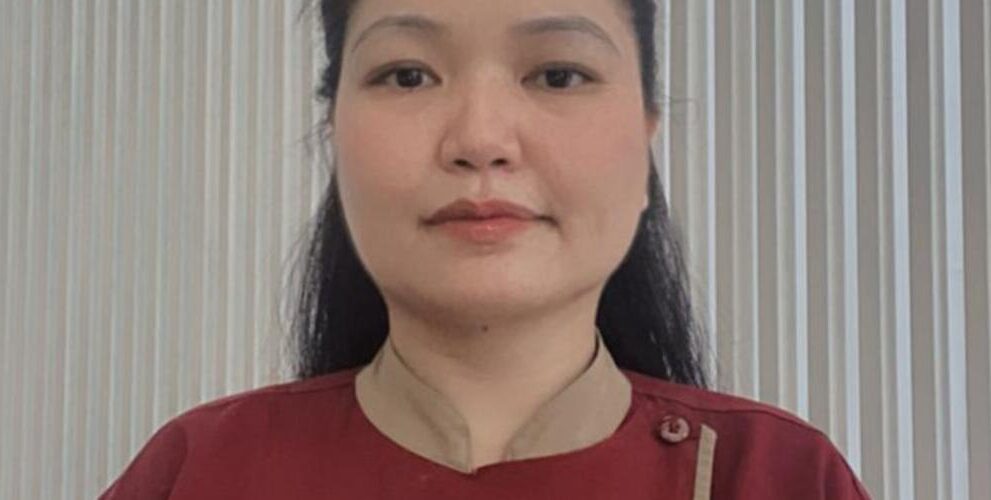Latest
Caring like a daughter: Manipur nurse’s story highlights India’s nursing woes
India faces a severe nurse shortage, driving many like Sitlhoum to do the work of many, silently and selflessly
Author
Author
- admin / 3 weeks

- 0
- 7 min read

Author
Watching her mother’s health struggles while growing up made Hoilenchong Sitlhoum from Manipur choose nursing as her career.
“At that time, it was difficult to get doctors and nurses… We did not even have someone to give injections in emergencies also. So I decided then itself that I would become a nurse,” she said, speaking of the acute shortage of nurses in her state during her childhood.
Sitlhoum, 37, has now been working for 12 years, with the last almost five years at the Antara Senior Care, caring for senior citizens. Her day now starts at 8 am on most days, meeting each of the 17-odd residents most of whom are over 60 years of age, checking on them and making sure that they are ok.
“Many of them have health issues; they have difficulty while walking. Then they also have issues with eating, taking their medicines. So we need to convince them to eat,” she said, explaining that she needs to care for her patients the way one would care for children. “We need to understand their psychological and emotional needs also.”
Sitlhoum pointed out that many of the older patients are staying away from their families, and are often homesick. Nurses, like herself, are the stand-in family they turn to, when they miss their own children.
There are more than 36 lakh nursing personnel in the country that form the backbone of the healthcare sector and act as the first responders in any health crises. On this International Nurses Day, we bring you the story of how even after years, the shortage of nurses continues to persist in the country, and how these health workers are generally underpaid and overworked.
Nurses’ shortage- a universal problem
The World Health Organization (WHO) estimates that there are 2.9 crore nurses, and about 22 lakh midwives in the world; yet this is not enough to meet the demand. “WHO estimates a shortage of 4.5 million nurses and 0.31 million midwives by the year 2030. That will bring the a global shortage of health workers estimated for 2030 to 4.8 million nurses and midwives, with the greatest gaps found in countries in Africa, South-East Asia and the WHO Eastern Mediterranean Region, as well as some parts of Latin America,” according to their fact sheets.
The Indian government claims that “36.14 lakh nursing personnel in the country as on December, 2022. Assuming 80% availability of nursing personnel, the nurse- population ratio is 1:476,” which is not too far behind the recommended ratio.
However, estimates by others are not as promising. Last year, the Director General of Association of Healthcare Providers (India), Dr Girdhar Gyani, had said that “with 1.96 nurses per 1,000 population, India falls short of the World Health Organization (WHO) recommended rate of three nurses per 1,000 population.”
Antara Senior Care, a part of the Max India Ltd, where Sitlhoum currently works, is one of the better institutes, which ensures a 1:1 to 1:4 nurse to patient ratio depending on requirement. However, she is aware that in other parts of the country, the story is slightly different.
“After my mother’s illness, I realised that there is a shortage of nurses in India. So I thought nursing profession will be suitable for me,” she said, while adding that the reasons for this shortfall include low wages compared to demanding workloads in the country. This means that many trained nurses migrate abroad, for better salaries and working conditions.
To illustrate this, for a nurse with the kind of experience that Sitlhoum has, they can earn an average of Rs 50,000 to 60,000 a month, if they are working in one of the bigger establishments in the metro cities of the country; this could be significantly less if they are working in smaller organisations or remote areas. With the rising cost of living, especially if you are living outside of your hometown and have to pay rent as well, this income may not be much.
The work load for nurses can be gruesome as well. Many nurses in the country work upwards of 12 hours at times. Sitlhoum herself is supposed to work 9 hour shifts, but as many of her older patients tend to take up to 1 hour in their interactions with her, her shift can run up to 12 hours long, she said. In addition to this, nurses may even be expected to respond to emergencies, even if it outside of their working hours.
In fact, a few years ago, based on the directions of the Supreme Court a “Committee of Experts was constituted under the Chairpersonship of Director General of Health Services to look into the working conditions and pay of nurses working in private hospitals and nursing homes,” which submitted recommendations and this was shared further with states and UTs to formulate legislation and guidelines. However, it appears that not much has changed, as the complaints still persist.
But Sitlhoum, like many other nursing personnel, does so without complaint. “That is why our company gave me an award calling me ‘Wonder Woman.’ That is the blessing of my parents. My parents told me that whenever somebody needs any help, beta, you need to attend; because you are in nursing profession,” she said.
Nurses form the backbone of the health sector
Despite these challenges, many nurses continue to toil away, serving patients, and making sure that everybody’s needs are catered to. At Sitlhoum’s organisation, which provides residences, care homes, and at home care for seniors, including a dedicated centre for dementia care, they acknowledge that nurses are pillars of strength.

“The clinical vertical, including nurses, are the pillars of the industry. Without nurses Antara definitely, and any healthcare organisation cannot run. Nurses are the backbone and the pillars of our organisation,” said Dr Shabnam Mir, Physician and Medical Advisor, at Antara Senior Care.
“Nurses, they are the ones who are in front of the patient, taking care of the patient. We doctors are the backend. But they are on the frontline, who are taking care of whole recovery of patient.” she added.
In senior homes such as Antara, where they may be long term residents as well, patients tend to form very close bonds with some of the nurses. The “psychological support” that nurses provide is also unparalleled according to Dr Mir. Seh said that nurses speak to the patients about the treatments, and with them “day and night.” “A lot of bonding happens between nurses and patients, especially the seniors,” according to Dr Mir, and this in turn helps with faster recoveries too.
Talking of a 76 year old patient at the facility, Sitlhoum said that they would always ask for her– be it for meds, or even if they needed something from the market. “They loved me like a daughter,” said Sitlhoum.
Dr Mir said that at their centre, they in fact had more nurses than doctors, as “patients require more attention from nurses.”
“Doctors are the ones who do the prescribing. Nurses are the one executing the orders, under the supervision of the doctors. So they play the most crucial role in patient recovery,” said the doctor, while adding that even if there was an emergency, it is the nurses who may detect it first and then alert the doctors, making them first responders.
“All the alarming signs on the patient side are detected by the nurses. Because we can’t have 1:1 doctor patient ratios, but we can have 1:1 nurses to patients. They are the ones who gives us all the information,” she said, underlining the crucial role nursing staff play in the healthcare sector.
Also read: India needs 6 million nurses by 2030 to ward of newborn care crisis – First Check









